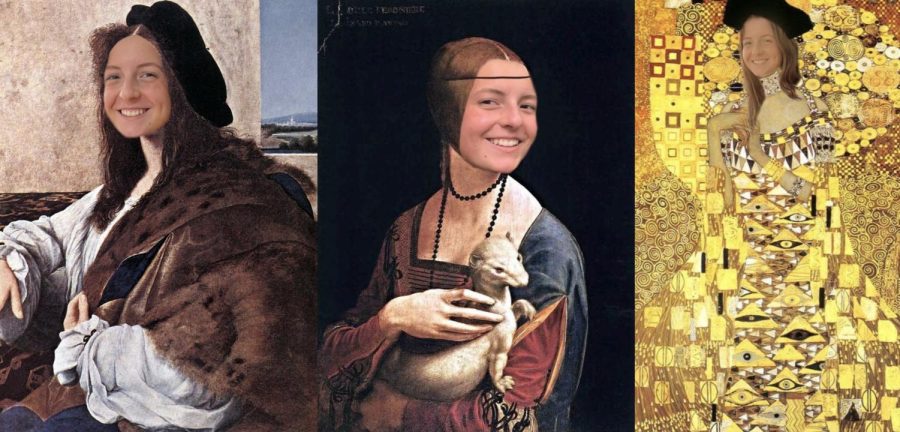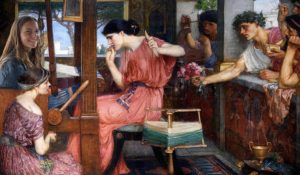Anna’s Book Nook: Still Life
Photo illustration by Anna Keneally
Hundreds of well-known paintings were stolen by Nazi soldiers during raids, including Portrait of a Young Man by Raphael, Lady with an Ermine by da Vinci and Portrait of Adele Bloch-Bauer I by Klimt. Copies of these paintings in the style of Anna Keneally were recently uncovered and are set to be displayed in the press room with paid entry.
“Don’t judge a book by its cover,” is, in my opinion, the worst advice ever given when it comes to actual books. I absolutely judge every book by its cover and the level of interest I have in a book is generally based on my assessment. If a book has an ugly cover, I am much less likely to be excited about the story inside, so it is a good thing that the cover of Still Life, by Sarah Winman, is as beautiful as it is. The cover immediately caught my eye and allowed me to read a story that captured my heart.
Evelyn Skinner is a middle-aged art historian in the time of World War II, which was an interesting time in the world of art. Nazis were destroying art that was not fitting with their image, consistent with the rest of their evil endeavors. Evelyn is tasked with finding and rescuing these paintings, primarily in Italy. During this time she meets young Ulysses Temper, a British soldier who is a globe maker, with a wife who is not waiting for him at home. Though their paths diverge, a friendship is built that lasts decades following their initial encounter. Ulysses goes home to London and picks back up with his life until an event from his past in Italy brings him back.
I am a huge fan of character-driven books and it is a nice break from the plot-driven books that I have read recently. It is extraordinary when you find friends within the pages of a book, and that is what I did with Winman’s novel. I felt as though Cressy the tree whisperer, Pete the ambitious pianist, Col the sometimes abrasive pub owner, Claud the Shakespearean bird and Ulysses were all my best friends. Their dynamic personalities build bonds that result in lifelong friendship even when Ulysses is a distance away. This book has a plot in the sense that there are events that occur, but it is a soft plot. There is no rush in daily life so there is no rush in this book and very little tension. It is fun to read without the sense of impending doom. If you are looking for a book that keeps you at the edge of your seat, this is not it. This is a book where you can sit back and be amongst fictional friends with an occasional surprise.
My growing appreciation for art history thanks to AP Art History teacher Keith Yanity has helped me pick up on the allusions in this artistic book. Aside from the use of art itself to send a message about the character, the syntax borders on poetic, exhibiting the beauty in a still life, which, in the art world, is a painting or portrait of often mundane things such as fruit, flowers or other everyday objects. A still life often portrays a message of impermanence in a beautiful way. Flowers will wilt and fruit will rot, much like the impermanence of the lives of those experiencing the time after World War II.
Still Life celebrates the unextraordinary, the kind and the human: things that I feel are not celebrated enough. The beautifully mundane things like the family that we come home to every day, which may not be related by blood, and the art that we think is pretty, are on full display. I read this story like I would look at art or listen to an interesting story from a friend, which I now realize are one and the same. Beautiful things change the way we see the world. We all are living a still life. Ripples flow through from time to time, but the impermanence is beautiful and the colors from the refracting light are truly vibrant.
Your donation will support the student journalists of Thomas S. Wootton High School. Your contribution will allow us to purchase equipment and cover our annual website hosting costs.
Anna Keneally is a 2022 graduate.










